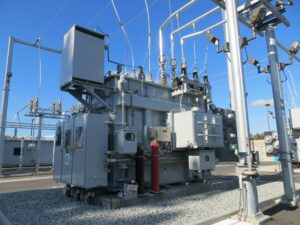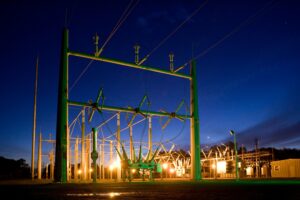In today’s interconnected world, the energy sector stands as a vital backbone of national and global infrastructures, facilitating everything from lighting our homes to powering industries. However, this sector is increasingly finding itself in the crosshairs of cybercriminals, making cyber resilience not just a matter of technological integrity but of national security.
The concept of cyber resilience in the energy sector revolves around the capacity to anticipate, withstand, recover from, and adapt to adverse cyber events. This article delves into the vulnerabilities, threats, and multifaceted strategies necessary to fortify the energy sector against digital disruptions.
The Vulnerability of the Energy Sector to Cyber Threats

The energy sector’s critical role in national infrastructure makes it an attractive target for cybercriminals and nation-state actors looking to wreak havoc. These cybercriminals can often attack infrastructure targets on behalf of a feuding nation, although cybercriminals seeking financial gains can also target the energy sector. The cyber threats they pose are varied and sophisticated, ranging from ransomware attacks that lock access to critical systems, to sophisticated state-sponsored attacks aiming to disrupt national power grids. The potential consequences of these threats are not just economic but can have dire societal impacts, including loss of life in extreme cases.
Within the U.S., both the frequency and level of sophistication of cyber attacks against the energy sector have increased in recent years. This is because of the importance of our energy infrastructure. But as we’ll see, it’s also because of the energy sector’s unique vulnerabilities.
Complex Ecosystem
The energy sector’s infrastructure is a complex ecosystem that spans power generation plants, transmission lines, and distribution networks. At the heart of this ecosystem lie information technology (IT) and operational technology (OT) systems, which are crucial for the sector’s operations. IT systems manage data and communications, whereas OT systems control physical devices and processes. While these technologies enable efficiency and innovation within the sector, they also introduce significant cyber vulnerabilities. The integration of IT and OT systems exposes the energy sector to cyber threats that can disrupt operations and compromise security.
Legacy Systems

A notable vulnerability within the energy sector stems from its reliance on legacy systems and third-party vendors. Many facilities within the sector operate using outdated technology that was not designed with modern cybersecurity threats in mind. These legacy systems often lack the security features necessary to defend against current cyber threats, making them easy targets for attackers. Furthermore, the energy sector’s dependence on a wide range of third-party vendors for software, hardware, and services introduces additional risks. These vendors, which may be located globally, vary in their cybersecurity practices and standards. As a result, any security weaknesses in a vendor’s systems can potentially be exploited to gain unauthorized access to the energy sector’s critical infrastructure.
Supply Chain
The energy sector’s supply chain is highly interconnected, creating a network of dependencies that can amplify the impact of cyber threats. This interdependence means that a breach in one part of the supply chain can have cascading effects throughout the sector. For instance, an attack on a single supplier could disrupt the availability of essential components or services, leading to operational delays or shutdowns across multiple energy facilities. The geographic spread of these interdependencies further complicates the sector’s ability to manage and mitigate cyber risks, as an issue in one region can affect the power availability in another. This interconnected nature requires a coordinated approach to cybersecurity, emphasizing the importance of supply chain security in safeguarding the sector’s overall resilience.
Strategies for Enhancing Cyber Resilience
Although recognizing the threat landscape is crucial in crafting a solid cyber resilience strategy, proactive measures can and should be implemented to mitigate these threats.
Assess Vulnerabilities

Naturally, the first step in building resilience in a power grid is to assess strengths and weaknesses to better understand areas of vulnerability. Cybersecurity within the energy sector is rarely going to be perfect or free of concerns. The key is understanding where vulnerabilities exist and creating a set of priorities based on risk. This means anticipating potential attacks and the consequences of those attacks. Are the current cybersecurity protocols and activities adequate in reducing or eliminating those risks? If not, companies will know what steps they need to take in order to build resilience and a green grid.
Authenticate Hardware
One critical step in ensuring cybersecurity is to authenticate every piece of hardware that’s used. Physical pieces of equipment that are required to run energy systems should be solely in the hands of authorized users with strict password protection. If user login is too easy, it creates a pathway for nefarious cybercriminals to infiltrate critical hardware and wreak havoc. Protecting this hardware should be a top priority within the energy sector.
Virtual Dispersive Networking
With virtual dispersive networking (VDN), different parts of a network are encrypted separately. Therefore, key information and messages are transmitted over multiple computers, servers, and other devices. This makes it harder for hackers to collect large amounts of data during cyberattacks. In fact, the data that they collect won’t be useful because it will be difficult to decrypt.
Behavior Analytics
User-behavior analytics (UBA) is a useful tool for discovering and identifying potential cyber threats. UBA uses machine learning to study all users on an energy company’s network. It will be able to determine how someone navigates the system and how they gain access to sensitive information. If a user is exhibiting suspicious behavior on their way to accessing this information, UBA can raise the red flag and identify a potential threat. The technology behind UBA continues to grow more sophisticated, making it a powerful and necessary tool for cybersecurity within the energy sector because hackers are becoming equally sophisticated in their pursuits. Therefore, UBA is needed to stay one step ahead of cyber threats.
Build Incident Response and Recovery

Obviously, building safeguards and cyber resilience are critical within the energy sector, but it’s still important to have a plan in place in case there is a disruption. What is the response if the supply chain is interrupted? How will the company deal with a hacker that’s infiltrated the system? What are the steps for dealing with the issue and getting everything back on track? Just in case the built-in resiliency fails, energy companies need to have a plan of attack. It can be particularly useful to conduct exercises that simulate a successful cyberattack and what the response to that attack would look like. Of course, prevention is the top priority, but preparation and response are also key to cybersecurity in the energy sector.
Join the EIS Council
As the landscape of cyber threats continually shifts and becomes more complex, the approaches to counter these threats must adapt in tandem, ensuring uninterrupted power and smooth operation of industrial processes.
At the EIS Council, we recognize that fostering cyber resilience within the energy sector is an ongoing endeavor that demands concerted effort from industry participants, governmental bodies, and international allies alike. Our goal is to unite experts, policymakers, and industry leaders worldwide to achieve this objective.
Building cyber resilience is a collective responsibility. We invite you to join our mission and collaborate with us at the upcoming CyberTech Global Conference in Tel Aviv on April 9th, 2024. Together, we can safeguard our critical energy infrastructure for the future.
Advancing Earthquake Resilience: Strategic Urban Planning and Global Partnerships
In an era where urban landscapes continue to sprawl and the frequency of natural disasters seems to be on the rise, the importance of building resilient cities has never been more pronounced. Earthquakes, in particular, pose a significant risk to densely populated areas, with the power to cause extensive damage and incur millions in damage […]
The Role of Local Governments in Strengthening Infrastructure Resilience
The significance of local governments in strengthening infrastructure resilience cannot be understated. Often perceived as entities primarily focused on addressing routine community concerns and improvements, their responsibilities extend far beyond these day-to-day operations. In the realm of preparing for and mitigating the effects of large-scale, catastrophic events—referred to as “black sky” disasters—local governments emerge as […]
Navigating Complex Interdependencies and Building Resilience in the E-Sector
In today’s interconnected world, the electric sector is more than just a utility provider; it’s a cornerstone of modern life. Its influence extends beyond mere power supply, touching virtually every aspect of our daily activities, from powering homes and businesses to fueling transportation and technology. This pivotal role, however, is not without its complexities. The […]

